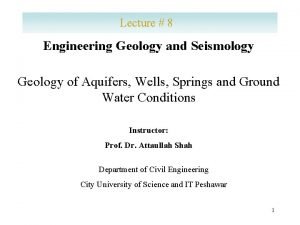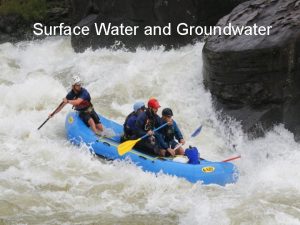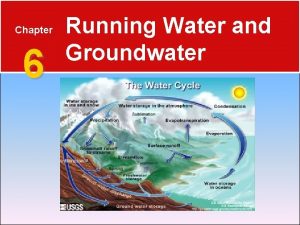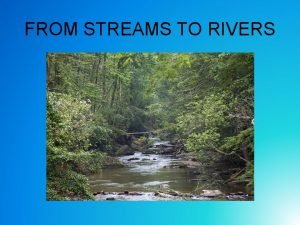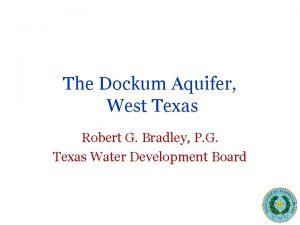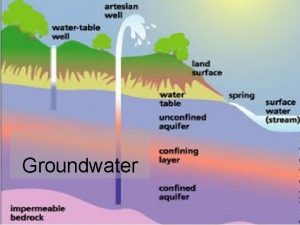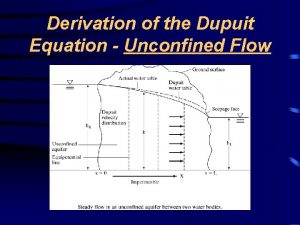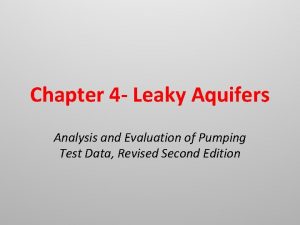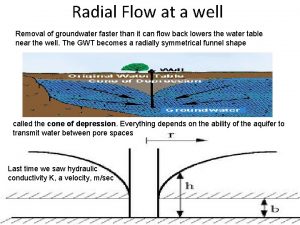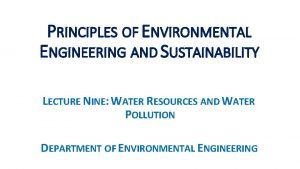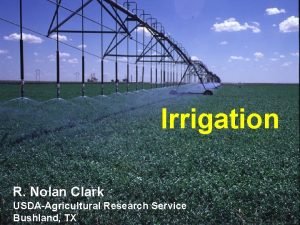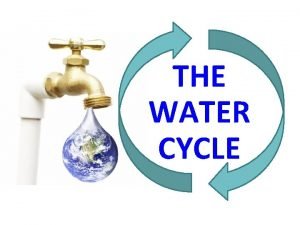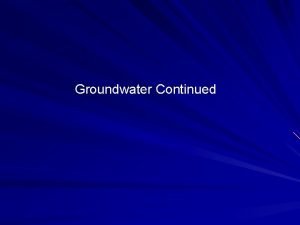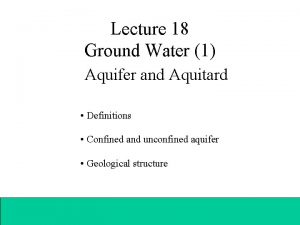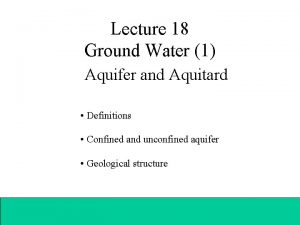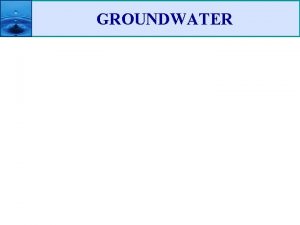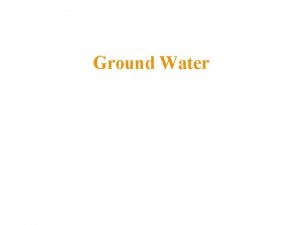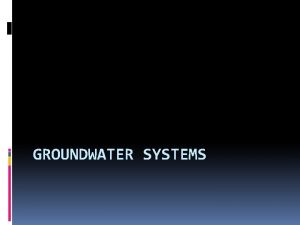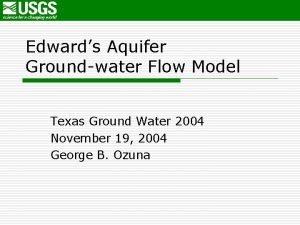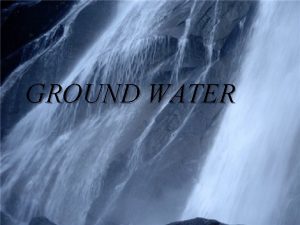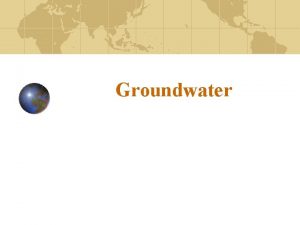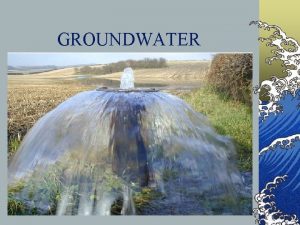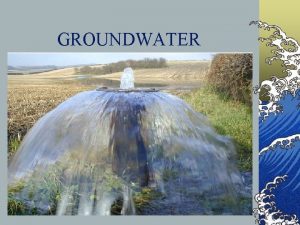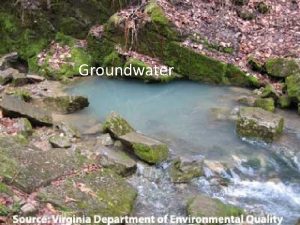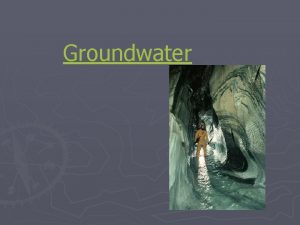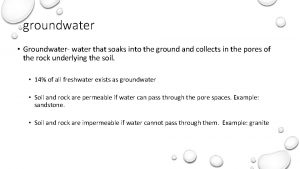Ground Water Todays Plan Groundwater Groundwater Aquifer aquitard


















- Slides: 18

Ground Water

Today’s Plan: Groundwater • • • Groundwater Aquifer / aquitard Water table Groundwater flow Wells & springs Groundwater contamination

What is Groundwater? • Rain and snowmelt that infiltrate the ground. • Soil and rock act as giant sponges, they are full of tiny pores and cracks that are usually less than millimeters in size which allows water to infiltrate and collect underground.

Groundwater Feeds the River Systems • Groundwater and surface water are one connected water system. • Water wells intercept groundwater that may be on its way to springs that feed streams and rivers.

The Water Table

The Water Table • Unsaturated zone: through which water moves downward and whose pore space is not completely filled. • Saturated zone: in which water collects and whose pore space is completely filled. • The plane of separation between these two zones is the water table.

Groundwater Basics Beds of rock, sediment, and regolith with high porosity (% of pore space) are better suited to holding groundwater. • Aquifers: Beds that hold large amounts of groundwater. • Types of pore space: • Space between grains.

Permeability: • Just because pore space exists doesn't mean that water can flow through it. Pores may be isolated. • Permeability: the ability of a solid to allow fluids to pass through.

Big concept I: • The Water Table is the basic description of how groundwater interacts with rocks. • If I pour water into a bucket of unconsolidated sand, the water won't spread evenly through the bucket. It will collect at the bottom. As a result, we will have two hydrologic zones in the bucket:

Big concept I: • Equilibrium: Water enters and leaves saturated zone. o Recharge: process by which water enters. (e. g. stream flows over rock fractures, allowing water to percolate in. ) o Influent stream: a stream that recharges groundwater. o Discharge: Process by which water leaves. (e. g through a spring) • Effluent stream: A stream which picks up water from saturated zone.

Aquifers are permeable layers of rock and sediment that have groundwater in enough quantity to supply wells.


Aquifers: • Aquifers can be unconfined or confined by impermeable rock layers called aquicludes. • In an unconfined aquifer, water flows freely. The water table tends to approximate the topography of the landscape. • In a confined aquifer, water flow is restricted by impermeable layers called aquicludes.


Groundwater: aquifers • What would be the properties (porosity/permeability) of conglomerate? • High porosity, high permeability

Groundwater: aquifers • What would be the properties (porosity/permeability) of un-fractured granite? • Low porosity, low permeability

Water flowing downhill beneath an aquiclude may be under pressure. This is artesian flow. Drilling into it will create an artesian well, through which water will flow spontaneously.

 Aquitard definition geology
Aquitard definition geology Stilagtites
Stilagtites Water and water and water water
Water and water and water water Todays plan
Todays plan Running water and groundwater
Running water and groundwater Water erosion and deposition
Water erosion and deposition Chapter 6 running water and groundwater
Chapter 6 running water and groundwater How does groundwater rejoin the water cycle
How does groundwater rejoin the water cycle Edible aquifer lab activity answers
Edible aquifer lab activity answers Dockum aquifer
Dockum aquifer Gulf coast aquifer
Gulf coast aquifer The dupuit formula is based on
The dupuit formula is based on Leaky aquifer definition
Leaky aquifer definition Unconfined aquifer example problems
Unconfined aquifer example problems Ogallala aquifer
Ogallala aquifer Ogallala aquifer
Ogallala aquifer Ogallala aquifer
Ogallala aquifer What's an aquifer
What's an aquifer The floridan aquifer is consolidated.
The floridan aquifer is consolidated.
